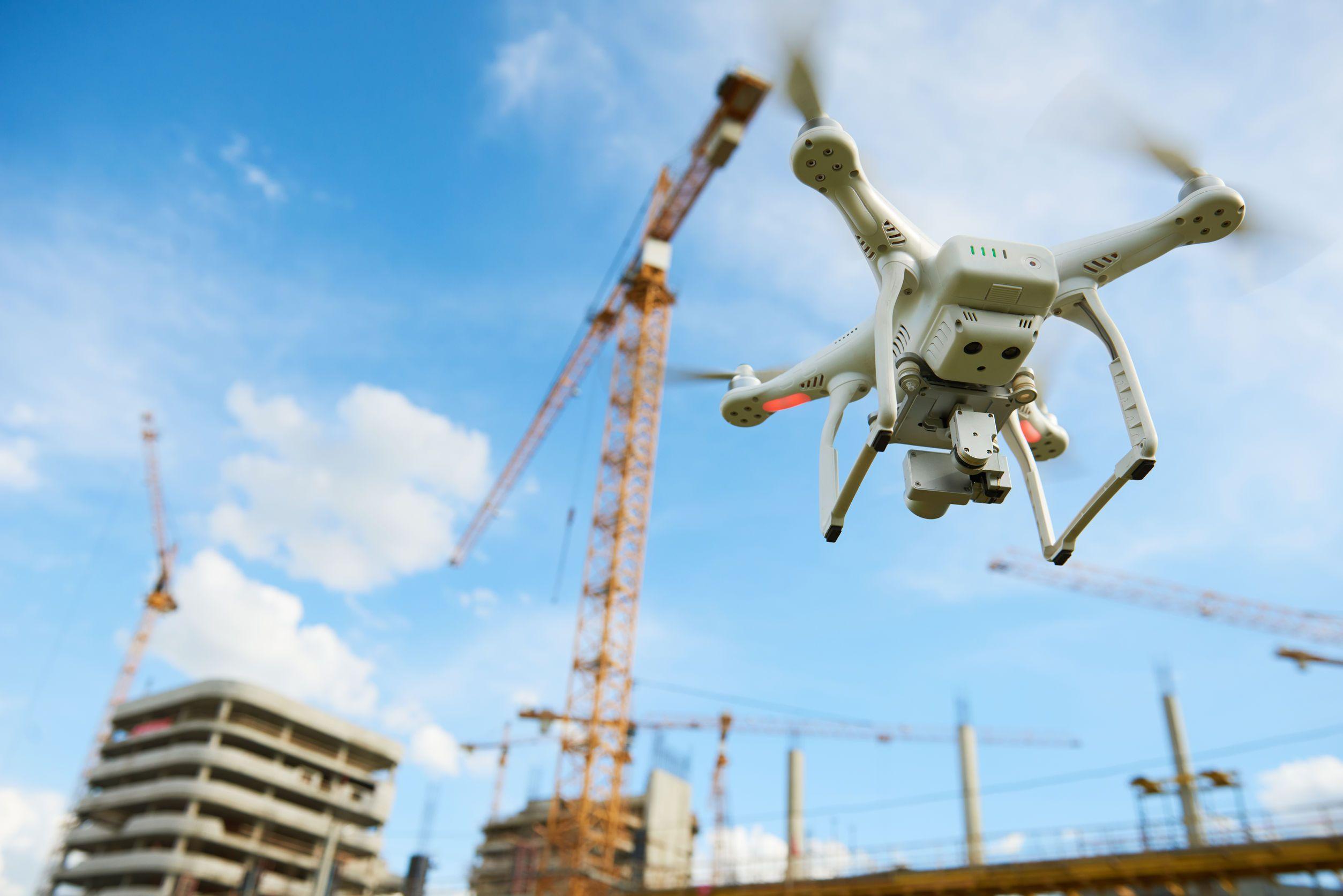The commercial drone market has experienced significant growth in recent years, and one of the sectors that have embraced this technology most enthusiastically is construction and infrastructure. Drones, with their ability to collect real-time data, provide high-quality visuals, and perform tasks with precision, are revolutionizing how construction and infrastructure projects are planned, executed, and maintained.
In this article, we explore how drones are transforming the construction and infrastructure industries, the benefits they offer, and the factors driving their widespread adoption.
Transforming Construction and Infrastructure
The integration of drones in construction and infrastructure is bringing efficiency, safety, and accuracy to various stages of a project, from design to completion and beyond. Here are some ways drones are being utilized:
1. Site Surveying and Mapping
Traditional surveying methods can be time-consuming, costly, and often involve significant human risk, especially in difficult-to-reach areas. Drones equipped with advanced LiDAR (Light Detection and Ranging) and photogrammetry sensors can quickly and accurately map large construction sites and terrain.
-
Benefits:
-
Reduces time spent on data collection.
-
Provides precise, high-resolution maps for better project planning.
-
Increases safety by minimizing the need for personnel in hazardous environments.
-
2. Project Monitoring and Progress Tracking
During construction, drones offer an efficient way to monitor progress. Aerial imagery captured at regular intervals allows project managers to assess whether construction is proceeding as scheduled, identify potential delays, and ensure compliance with safety standards.
-
Benefits:
-
Real-time progress monitoring for project managers.
-
Helps in identifying discrepancies and potential risks.
-
Enables better resource allocation and scheduling.
-
3. 3D Modeling and Design Validation
Drones can capture detailed aerial imagery and convert it into 3D models, which provide a visual representation of a project at various stages. This technology helps architects and engineers to verify that the structure is being built according to the design specifications, ensuring alignment with initial plans.
-
Benefits:
-
Enhanced design accuracy and verification.
-
Facilitates design updates and adjustments in real-time.
-
Reduces errors and rework during the construction phase.
-
4. Inspection and Maintenance
After construction is completed, drones can be used for regular inspections of buildings, bridges, roads, and other infrastructure. Drones with high-resolution cameras and thermal sensors can quickly identify damage, wear and tear, or structural issues that may not be easily visible to the human eye.
-
Benefits:
-
Faster, safer inspections compared to manual methods.
-
Early detection of issues, reducing maintenance costs.
-
Reduces the need for scaffolding or other expensive and labor-intensive equipment.
-
5. Safety Monitoring
Safety is a major concern in the construction industry, and drones can play a critical role in ensuring compliance with safety protocols. Drones can monitor construction sites for hazards, ensuring that safety equipment is used correctly and that workers are in safe zones.
-
Benefits:
-
Reduces human exposure to dangerous tasks and environments.
-
Allows for real-time monitoring of compliance with safety standards.
-
Provides valuable data for incident reports and risk assessments.
-
Key Drivers of Drone Adoption in Construction and Infrastructure
1. Cost Efficiency
Drones significantly reduce the need for expensive equipment like cranes, scaffolding, and helicopters for aerial inspections or surveying. The low operational costs of drones, combined with their ability to complete tasks faster and with higher precision, make them an attractive alternative to traditional methods.
2. Technological Advancements
The continued development of drone technology, including improved sensors, autonomous flight capabilities, and AI-powered analytics, has made drones more accessible and effective for construction projects. These advancements allow drones to operate more reliably and perform tasks with greater accuracy, enhancing their value in the construction and infrastructure sectors.
3. Regulatory Changes
Governments worldwide are adjusting their drone regulations to enable more widespread use in commercial applications, including construction. In many countries, drones are allowed to operate in controlled airspace, and new policies are being introduced to streamline licensing and certification for commercial drone pilots.
4. Growing Demand for Efficiency and Real-Time Data
In the construction industry, the need for real-time data and streamlined workflows is driving the adoption of drones. By providing instantaneous insights into construction progress, site conditions, and potential issues, drones allow for quicker decision-making and more efficient project management.
5. Environmental Sustainability
Drones contribute to sustainability efforts in construction by enabling more precise resource management, reducing waste, and minimizing the environmental impact of construction operations. They also reduce the carbon footprint associated with traditional surveying and inspection methods.
Challenges in Drone Adoption
While drones offer numerous benefits to the construction and infrastructure sectors, some challenges remain:
-
Regulatory Restrictions: While regulations are evolving, drones still face restrictions in certain regions, especially regarding Beyond Visual Line of Sight (BVLOS) operations and airspace access in urban areas.
-
Integration with Existing Systems: Integrating drone data with traditional construction management and enterprise software can be complex and require investment in new technology and training.
-
Data Privacy Concerns: As drones capture large amounts of visual and geospatial data, there are concerns about data privacy and security, particularly in urban and sensitive locations.
Conclusion
The adoption of drones in construction and infrastructure is transforming the industry by increasing efficiency, improving safety, and reducing costs. From site surveying and real-time project monitoring to inspection and maintenance, drones are proving to be indispensable tools that offer a competitive edge in an increasingly digital and data-driven construction environment.







